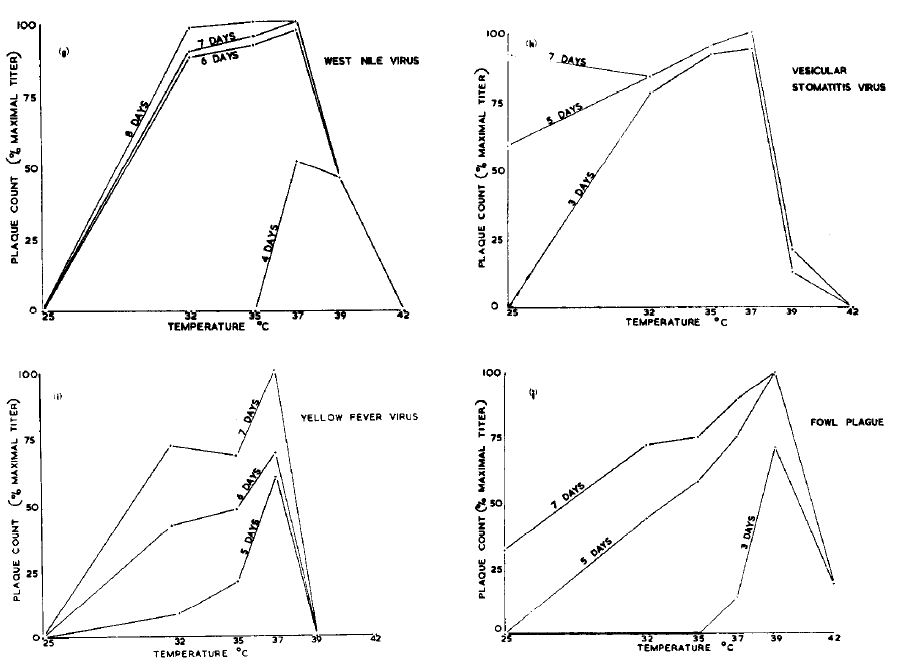 Fever, the body’s rise in set temperature in response to infection, is almost synonymous with illness. You probably know this it works. Fever helps you to fight off an infection because the heat hurts the pathogens. But did you ever wonder why? Some bacteria can merrily reproduce at the typical boiling point of water. Why can’t the bugs that infect you? Moreover, bacteria, viruses, etc.., reproduce and therefore evolve very quickly compared to humans. This is why antibiotic resistance evolves so quickly. Why does antibiotic resistance evolve quickly, but fever resistance doesn’t?
Fever, the body’s rise in set temperature in response to infection, is almost synonymous with illness. You probably know this it works. Fever helps you to fight off an infection because the heat hurts the pathogens. But did you ever wonder why? Some bacteria can merrily reproduce at the typical boiling point of water. Why can’t the bugs that infect you? Moreover, bacteria, viruses, etc.., reproduce and therefore evolve very quickly compared to humans. This is why antibiotic resistance evolves so quickly. Why does antibiotic resistance evolve quickly, but fever resistance doesn’t?

This is the question Dan Fessler and I sought to address in our paper “Insurmountable Heat: The Evolution and Persistence of Defensive Hyperthermia,” published today in the Quarterly Review of Biology (Also see entry on Academia.edu).
How well does fever work?
Very well. In the paper, we call fever “defensive hyperthermia,” to disambiguate it from common but distinct other meanings. Here I will just say fever. Fever is a master strategy of the immune system. It is powerful and it is a key part of a coordinated counter-strike in the battle against our innumerable microbe adversaries. The strongest evidence that fever is a master strategy is its ubiquity. You can get a fever, but so can fish, lizards, lobster, insects and at least one species of leech. Even animals that can’t metabolically raise their temperature, still get fever behaviorally. When infected, a fish may swim to warmer waters to increase its body temperature. A lizard will do more sunbathing.
The diversity of animals that show a fever response (and have sophisticated immune system machinery to manage it) strongly suggest that fever has been around for at least 400 million years. Why do new antibiotics become useless in decades, but fever remains useful over hundreds of millions of years?
Profit of fire
The answer is complex, and in a blog post like this, I can only summarize some major points. Read the paper for a more thorough addressing of issues like why fever is often inadequate, and why at least some pathogens really do weather fever quite well.
In evolutionary and ecological terms, fever remains a master strategy by leveraging the force of natural selection itself against invasive microbes. A tiny critter intent on eating you has to do two things to succeed, in the Darwinian sense. It has to reproduce itself inside you, many thousands or millions of times. Second, it must get to the next person, and penetrate their immune defenses to get inside. For the pathogen, your body is its ecological environment. Just like any other creature, if it specializes in that environment -you- it will be able to survive and reproduce better. Consequently, pathogens tend to adapt to their host microecology: temperature, acidity, nutrient availability, electrolyte ratios, and so on. Just like an animal in the frozen north adapts by developing a fur coat or layer of insulating blubber.
Now you can guess why fever throws them for a loop. It adapted its bits to work well in your normal body temperature. Things like cell membrane transport proteins are only maximally efficient at a narrow temperature range. Fever temperatures start to wreak havoc on these and other parts the pathogen relies on to survive and copy. But they can also mutate and reproduce quickly, so why don’t they just adapt to the heat? This is certainly possible. But in reality, pathogens have adaptations that prevent them from adapting to the heat quickly (see graphs below)!

Why would this be? Because of that second thing a pathogen needs to do in order to succeed: infiltrate the next host. The next host will not be febrile; it will almost certainly be at normal body temperature. This isn’t just an inconvenience. The second host’s immune system will have a much easier time picking off this poorly-coping would-be invader. And there’s more. A microbe will have competition during infection, including the wild-type version of itself. Its own close cousins that are adapted to normal body temperature will be far better than it at infiltrating the new host. This adaptive cost of specializing at fever-temperature when trying to subsequently function at non-fever body temperature has been demonstrated in vitro experiments with E. coli (Rodriguez-Verdugo et al, 2013).
Whether the invasive bug changes its thermal preference or not, it still loses. An astute reader may ask, why not simply have two forms? One for one temperature, one for another? And why do many microbes easily survive higher and lower temperatures outside the body? Some pathogens really do have multiple morphs for different conditions. This is one reason the malaria parasite is so deadly. But it is also telling: Malaria has the most complex life cycle of any creature on Earth. Selection will favor easier/simpler coping strategies over extremely complex ones, if such are available. An adaptation for higher temperature can be easily evolved quickly, so it is magnitudes of order more likely to appear. An entire second morph complete with mechanisms to regulate when which morph arises, to have materials necessary for metamorphosis etc.., is far less likely and far more difficult to evolve. As I said before, fever is leveraging natural selection itself against the invader. NS is the house, and if you bet against the house, you can win today, but you will inevitably lose.
Public health implications
I am not a doctor and offer no medical advice. But the medical and epidemiological literature strongly suggest that fever is almost always beneficial to its bearer. It should almost never be artificially reduced (by drugs or cooling) unless it is trending dangerously high. Unfortunately, all over-the-counter (OTC) pain relievers you can buy are anti-pyretic (fever-reducing). I fault no one for wanting to feel less miserable when ill, but bear in mind you could be prolonging your illness and infectivity to other people- even if you feel better. A paper modeling the likely effects of OTC drugs suggests that 5% of seasonal cases and deaths from influenza are directly resulting from the use of OTC anti-pyretics (Earn et al. 2014).
Young, old, and pregnant people may have limited or low cellular immune responses (t-cells and antibodies). Therefore they might naturally rely more on fever than other groups.
Misconceptions about fever
Fever is an illness to be treated.
No. Fever is your body fighting off infection. It is a critical, coordinating mechanism of your immune response.
High fevers can cause convulsions/seizures, particularly in children.
Nope. There is no evidence that this is true. It is a belief based on the fact that seriously ill patients who have fevers also may experience convulsions. This is true, but observational studies have shown that fever reduction has no bearing on the risk of convulsion.
Did you know? Interesting trivia
- It could be that some plants can get a fever. This is far from certain, but infection can cause the rise in temperature (see poster above) in some species.
- The most common and effective treatment of plant infections is thermotherapy.
- Eusocial insects like honeybees have a fever analog; they raise the temperature in the brood comb when parasites are detected, by beating their wings so that their tiny muscles produce heat.
- The ancient peoples in places like Greece, Egypt, and Rome knew about the power of fever to heal. They used heat to effectively treat many ailments.
- The 1927 Nobel Prize in medicine was given to Julius Wagner-Jauregg. He cured syphilis decades before antibiotics existed by infecting people with malaria. The malaria caused intense rounds of fever that killed the bacteria.
- Fever can fight tumors for some of the same reasons it fights pathogens: fast-reproducing cells are more vulnerable to a shift in the temperature than normal body cells.
Cited
Clint, Edward, Fessler, Daniel M. T. Insurmountable Heat: The Evolution and Persistence of Defensive Hyperthermia. The Quarterly Review of Biology 2016; 91(1), 25-46.
Earn D. J. D., Andrews P. W., Bolker B. M. 2014. Population-level effects of suppressing fever. Proceedings of the Royal Society B: Biological Sciences 281:20132570.
Rodríguez-Verdugo A., Gaut B. S., Tenaillon O. 2013. Evolution of Escherichia coli rifampicin resistance in an antibiotic-free environment during thermal stress. BMC Evolutionary Biology 13:50.
Ruiz-Gomez J., Isaacs A. 1963. Optimal temperature for growth and sensitivity to interferon among different viruses. Virology 19:1–7.
